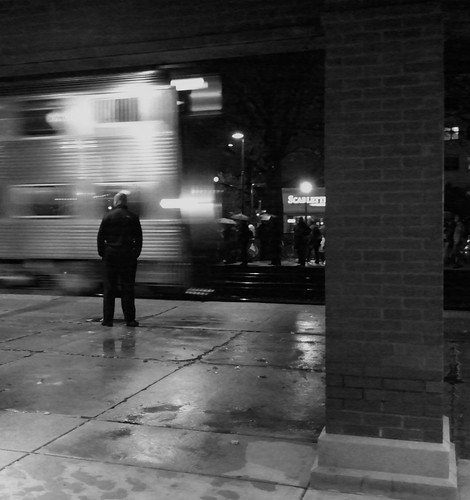Polaroid!
This camera was absolute garbage, a hand-me-down
With the advent of cell phone cameras (I'm currently rocking a 5mp Galaxy phone! Soon to be an 8mp Nexus 4 [there I go, going on about the camera, rather than the picture]), we're less interested in high resolution, pocketable point and shoot cameras and more interested in getting our pictures to look like those of yesteryear. I started shooting on 35mm point and shoots (namely a Vivitar C35r) when I was in my early teens. I lamented the softness and obvious light bleed issues inherent with such a camera. I yearned to use a well made rangefinder or SLR. I started shooting on a Rebel G and found that the sharp, excellent pictures were awesome, but I still wanted that old, soft feeling.
the devices I currently capture images on, sans the Polaroid One, which is in my glovebox
The digital age entered my life when I acquired a Fuji S3100 (or, rather, my father did and I used it) and I found myself chasing after sharper and sharper images. I loved that I could take a picture and within minutes have it up on a site like photobucket and share it with the world. These super-sharp 4MP images were all I ever wanted. I found myself stepping away from PX125 and HP4 film quickly in favor of the the digital age. Using models like the Nikon E5400 and Canon A520 I took two semester's worth of pictures that eclipsed my film efforts during that time. I took wonderful pictures with those cameras, but at the same time, never felt fully enabled by them.
I spent $300 on a camera in order to take pictures that look like a plastic camera 30 years ago. All in camera.
With my last few cameras, I've noticed that I have the option to shoot pictures in "toy camera" mode or a similar setting. They tend to oversaturate certain colors and brown out the image. It makes for very interesting images. I'm'a fan of the movement, I really am, but I see it as a resistance to the new school hierarchy of digital cameras and a short cut to creating "artsy" pictures. We keep looking to the old school for advances in the new school. It's hard to exemplify. I own a 35mm Vivitar that I've yet to develop a picture from and am quite nervous to develop. I'm anticipating the pictures to be soft, out of focus at times and most likely marred by light bleed.
$2 at a thrift store, about 3/4 through a roll of film. It's a vivtar, not a tower.
Instagram and Hipstermatic have made this trend very desirable among young people, recently. I'd be remiss to slander Instagram, since I am an avid user (Thomsbadphotos), I actually like that it has introduced people to the concept of Polaroid cameras, and probably is a boon for the Impossible Project. At the same time, though, it seems to be creating an illusion that artistry with a camera is mostly capturing an aesthetic, rather than creating an image that tells a story. People using these apps are more keen on the camera and app than they are on the subject and the photo, it seems. There are definitely people posting quality pictures on there, and on Tumblr and on Flickr and everything else out there.
Lomography, to me is a mixed bag. While I love the revival of old school methodology, equipment and styles; it seems the focus is more on the camera, than the photos. This is a mistake that I feel like I've been making for the last couple of years, focusing more on the sharpness at the corner of the 40mm vs. the 50mm or the sensor size of the camera instead of what's in front of the lens. I very rarely talk to someone in person who is interested in shooting old cameras that isn't talking about effects and cross processing, they mostly talk about "that look" instead of "that photo." There are some very stunning, sharp (and not in terms of sharpness) photos shown off online taken on some of the absolutely ugliest, poorest built cameras around, and I love it. At the same time, I browse Instagram and find myself cringing at the unwarranted use of a camera that is then soaked in "nostalgia" for a time before these people were even born.
a beautiful picture of a beautiful girl that I look at and say "look at that grain, I wish I took it on a DSLR, so it would look sharper" instead of saying "good picture!
I love the use of classic cameras; I love shooting my polaroids; I love shooting 35mm and I love shooting digital. What I don't love? Useless pictures. Keeping a photo-diary is cool, taking pictures of things that interest you is great; but 20 pages of sepia toned Selfies really detracts from the photos. I'd love to get my hands on one of the Bel Airs on Lomo and start shooting 120, but first I'm getting my new 35mm range finder in order and seeing how my own Lomo style 35mm works.
All in all, I've landed nowhere on this. I love all of the cameras, apps and films I've mentioned, but I hate the way that cameras are used by some people and judged by others. Ah, well, maybe I'll get me a bellows system Polaroid and some FP100c film and just go all out.















